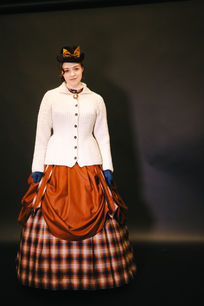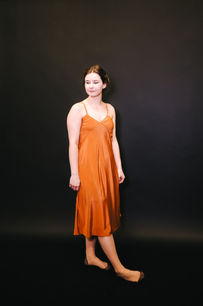Knit Fast, Die Warm: An Exploration Of Historical Knitwear And The Clothing Worn With It
This capstone project includes three fully designed and produced looks that combine my interest in hand knits, and historical understructures from 1872 through 1933. Each of these looks include a central hand knit element, as well as sew garments appropriate for the period. This project exams the relationship between hand-knits and the context in which they were worn throughout the period of study.
Pennsylvania State University
April 2023
Advisor: Laura Robinson

Look 1: 1872
Fit Model: Tori Robinson
This look includes a corset, cage crinoline, chemise, petticoat, underskirt, gown, and knit Basque. Elements of this look would be appropriate for an upper-middle class woman to wear in winter, as the knit Basque was marketed as winter outerwear. It illustrates the functionality of knitwear






















Look 2: 1903
Fit Model: Hilary Hayes
The knit element for this look is a powder pigeon style sweater, inspired by a 1903 crochet pattern. The sewn elements consist of a set of combinations, a corset, corset cover, petticoat, skirt, and shirtwaist blouse. As the primary source this look is based on is marketed as an automobile sweater, the outfit is both practical and stylish for a wealthy woman.























Look 3: 1933
Fit Model: Alivia Cross
This look consists of a hand-knit dress inspired by a knitting pattern published by the Minerva yarn company. This look also included tap pants, a handkerchief style brassiere, and slip, as would have been worn in the period. This dress illustrates the movement of knitwear away from pure practicality, and towards fashion.














